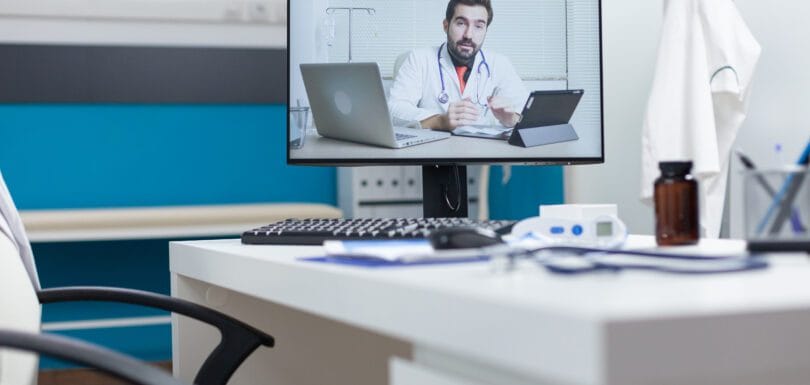Powerful Ways Virtual Staff Handle Emergency Calls Now
How Virtual Support Staff Handle Emergency Calls and Protocols When a patient dials in during a health crisis, every second matters. The way Virtual Staff Handle Emergency Calls can truly decide whether a situation is resolved calmly or spirals into chaos. That’s why more clinics are turning to Remote Medical Assistant for solutions like virtual medical assistant services and healthcare virtual assistant services, ensuring patients always have someone reliable on the other end of the line. Emergency calls in healthcare aren’t like typical customer inquiries. They require immediate attention, accuracy, and a compassionate voice that patients can trust. Virtual teams, when trained well, become the safety net that providers rely on to keep protocols consistent and patients safe. In this blog, we’ll dive deep into why emergency calls require special handling, how virtual support staff are trained, and what technologies back them up. You’ll also discover the challenges they face, the protocols that guide them, and the best practices clinics can adopt to improve their own response systems. By the end, you’ll have a clearer picture of how these professionals transform urgent care into something reliable, efficient, and reassuring. The Role of Virtual Support in Modern Healthcare The healthcare industry has been evolving rapidly, and one of the most impactful changes is the increasing role of virtual medical assistants. Clinics and hospitals are recognizing that care doesn’t stop at the exam room door. Patients need someone to answer when fear or pain drives them to pick up the phone. Why rely on virtual support? For many providers, it comes down to three things: affordability, availability, and flexibility. Unlike in-house teams that might only cover standard working hours, virtual staff can provide round-the-clock assistance. This is especially valuable for small practices that can’t afford a large administrative team but still want patients to feel cared for any time of day. And their role is not limited to appointment scheduling or paperwork. The best part is that a healthcare virtual assistant can also step in during high-pressure moments like emergency calls when protocols must be followed to the letter. They’ve become extensions of the care team, handling situations that once seemed impossible to delegate. This evolution means healthcare practices aren’t just outsourcing tasks; they’re building resilient systems. The ability of virtual staff to jump from routine admin work to emergency call handling is proof that their scope is far broader than many first assume. Why Emergency Calls Demand Special Handling Not all phone calls to a clinic are created equal. Some are about rescheduling appointments, but others can be life-or-death. That’s what makes the handling of emergency calls unique. Unlike standard calls, urgent ones carry higher stakes, making virtual assistant in healthcare roles incredibly important. The challenge lies in distinguishing urgency. Is the patient experiencing mild discomfort or describing a symptom that requires immediate intervention? If calls aren’t handled properly, the results can include delays in treatment, legal liability, or even damaged trust between patients and providers. Additionally, healthcare laws such as HIPAA mandate careful management of sensitive data. If a distressed caller shares private details, those must be protected even as the call is escalated. That’s a heavy responsibility, but one that trained virtual staff can carry effectively when clear protocols are in place. It’s also important to recognize the emotional weight. Patients aren’t just seeking information during emergencies they’re seeking comfort. That human connection knowing someone is listening and guiding them calmly—helps reduce panic. And when a virtual assistant for medical practice has the training to balance empathy with efficiency, it makes all the difference in how quickly the right care is delivered. How Virtual Staff Handle Emergency Calls Effectively So, how exactly do Virtual Staff Handle Emergency Calls when the phone rings with urgency on the other end? It starts with intake. The first seconds of the call matter most, and staff are trained to listen carefully, gather essential details quickly, and keep the caller calm. Next comes triage. This isn’t about making medical decisions but about sorting the situation into categories: urgent, semi-urgent, or routine. For instance, chest pain is escalated immediately, while mild discomfort might be directed to the next available provider. A virtual medical office assistant plays a crucial role here, ensuring no call slips through unnoticed. Once the level of urgency is determined, escalation follows. That might mean contacting the on-call physician, reaching out to emergency services, or transferring the call to a nurse. During all of this, communication must remain steady, clear, and compassionate. Protocols keep mistakes at bay. Staff are trained to use checklists so nothing is overlooked, from confirming the patient’s identity to noting timestamps. By blending compassion with structure, virtual staff become a vital link between patients and providers during emergencies. It’s not about replacing doctors it’s about making sure patients reach them faster and with all the right information at hand. Training Virtual Staff to Manage Emergency Protocols Handling emergencies requires more than a calm voice; it requires preparation. Virtual staff go through comprehensive training to make sure they’re equipped for high-pressure calls. Orientation often covers medical terminology, basic symptom recognition, and how to follow protocol checklists. Practice sessions and role-play are key. These practice scenarios mimic real-life emergencies and allow staff to refine their responses without patient risk. By repeating these exercises, a virtual medical administrative assistant develops both speed and confidence. Scripts are also valuable. They don’t replace human interaction but act as safety nets. When emotions are high, scripts ensure no critical question goes unasked. For example, confirming patient location is essential if emergency services need to be dispatched. Training doesn’t stop after onboarding. Ongoing coaching and feedback sessions are critical, as protocols evolve and technology updates. A well-trained virtual assistant medical field professional knows how to stay current, adapt to new systems, and refine communication skills to serve patients better. Tools and Technology That Support Emergency Call Handling Behind every skilled staff member is a toolkit that makes emergency response possible. Call management platforms, for











